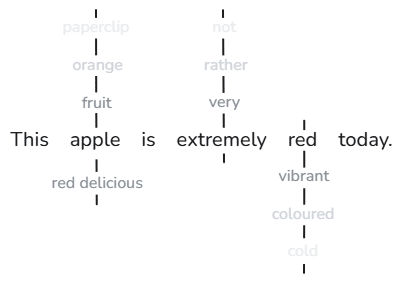Introduction
Leadership encompasses various approaches for guiding, inspiring, and managing individuals or groups towards common goals. The style a leader adopts can significantly impact team dynamics, productivity, and overall organizational success. This extensive examination analyzes different leadership styles, their practical applications, and their interconnections with related concepts in social dynamics and influence.
1. Autocratic Leadership
Autocratic leadership, also known as authoritarian leadership, is characterized by centralized decision-making power concentrated in the hands of a single leader. This style involves minimal input from team members and relies heavily on the leader’s expertise and judgment.
Practical Example:
Consider a high-stakes military operation where split-second decisions can mean the difference between life and death. In such scenarios, a commanding officer might employ an autocratic style, issuing direct orders without consultation to ensure rapid and coordinated action.
Key Components:
- Unilateral decision-making
- Clear chain of command
- Emphasis on efficiency and quick action
- Limited employee autonomy
Interconnected Concepts:
This style relates closely to the principle of authority in social influence. The leader’s position and perceived expertise create a powerful compliance trigger, often leading to swift action and cohesion within the group.

2. Democratic Leadership
Democratic leadership, also referred to as participative leadership, involves collaborative decision-making processes where team members are actively engaged in shaping outcomes. This style fosters a sense of ownership and can lead to higher job satisfaction and creativity.
Practical Example:
In a creative advertising agency, a project manager might employ a democratic approach when brainstorming campaign ideas. By encouraging input from all team members, regardless of their position, the manager taps into diverse perspectives and fosters a culture of innovation.
Key Components:
- Open communication channels
- Shared decision-making responsibilities
- Emphasis on team member input
- Balance between guidance and autonomy
Interconnected Concepts:
This style aligns with the principle of social proof in influence psychology. By showcasing that multiple team members support an idea, it becomes more persuasive and easier to implement across the organization.
3. Laissez-Faire Leadership
Laissez-faire leadership, or delegative leadership, is characterized by a hands-off approach where leaders provide resources and support but allow team members significant autonomy in decision-making and task execution.
Practical Example:
In a research and development department of a tech company, a laissez-faire leader might set broad objectives for developing new products but give engineers the freedom to explore innovative solutions without micromanagement.
Key Components:
- High levels of employee autonomy
- Minimal direct supervision
- Emphasis on self-motivation and self-direction
- Leader as a resource provider rather than a director
Interconnected Concepts:
This style intersects with the concept of intrinsic motivation in psychology. By granting autonomy, leaders tap into individuals’ internal drive for mastery and purpose, often leading to higher creativity and job satisfaction.
4. Transformational Leadership
Transformational leadership focuses on inspiring and motivating followers to exceed their own expectations and achieve extraordinary outcomes. This style emphasizes vision, charisma, and personal growth.
Practical Example:
A CEO implementing a major organizational restructuring might adopt a transformational approach by articulating a compelling vision for the company’s future, personally engaging with employees at all levels to address concerns, and providing opportunities for skill development to align with the new direction.
Key Components:
- Inspirational motivation
- Intellectual stimulation
- Individualized consideration
- Idealized influence (charisma)
Interconnected Concepts:
This style heavily leverages the principle of commitment and consistency in influence. By getting team members to commit to a shared vision, leaders can drive sustained effort and alignment towards long-term goals.

5. Transactional Leadership
Transactional leadership is based on a system of rewards and punishments, where clear expectations are set, and performance is closely monitored. This style focuses on maintaining order and efficiency within existing structures.
Practical Example:
In a sales organization, a transactional leader might implement a commission-based system with clear targets and bonuses for exceeding quotas, coupled with performance improvement plans for those falling short.
Key Components:
- Clear performance expectations
- Structured reward systems
- Active monitoring and feedback
- Focus on short-term goals and efficiency
Interconnected Concepts:
This style relates to the concept of operant conditioning in behavioral psychology, using external motivators to shape behavior and performance.
6. Servant Leadership
Servant leadership inverts the traditional power structure by prioritizing the needs of team members and focusing on their growth and well-being as a means to achieve organizational goals.
Practical Example:
A department head in a university might adopt a servant leadership approach by actively seeking ways to support faculty members’ research interests, advocating for resources on their behalf, and creating mentorship programs to foster academic growth.
Key Components:
- Prioritization of team member needs
- Emphasis on personal and professional growth
- Active listening and empathy
- Focus on building a supportive community
Interconnected Concepts:
This style aligns with the principle of reciprocity in social influence. By genuinely serving others, leaders often inspire loyalty and increased effort in return.
7. Situational Leadership
Situational leadership recognizes that different scenarios and individuals may require varying leadership approaches. This adaptive style involves assessing the needs of the situation and team members to determine the most effective leadership method.
Practical Example:
A project manager overseeing a diverse team might employ different leadership styles based on individual team members’ experience levels and the project phase. They might use a more directive approach with newer team members or during critical deadlines, while adopting a more delegative style with experienced staff or during exploratory phases.
Key Components:
- Flexibility in leadership approach
- Continuous assessment of team and situational needs
- Ability to switch between directive and supportive behaviors
- Focus on developing team members’ competence and commitment
Interconnected Concepts:
This style incorporates elements of emotional intelligence, requiring leaders to accurately perceive and respond to the emotional and developmental needs of their team members.
8. Charismatic Leadership
Charismatic leadership relies heavily on the leader’s personal charm, communication skills, and ability to inspire others. This style can be particularly effective in rallying support for a cause or vision.
Practical Example:
A political leader during a time of national crisis might employ charismatic leadership to unite the country, using powerful speeches, personal connections with citizens, and a compelling vision for recovery to inspire hope and collective action.
Key Components:
- Strong communication and oratory skills
- Ability to articulate a compelling vision
- Personal magnetism and charm
- Emotional connection with followers
Interconnected Concepts:
This style leverages the principle of liking in influence psychology, where people are more likely to be persuaded by those they admire and feel connected to.
9. Bureaucratic Leadership
Bureaucratic leadership adheres strictly to established rules, procedures, and hierarchies. This style emphasizes consistency, fairness, and predictability in organizational operations.
Practical Example:
In a government agency responsible for issuing licenses, a bureaucratic leader might focus on ensuring that all applications are processed according to standardized procedures, with multiple checks and balances to maintain accuracy and fairness.
Key Components:
- Strict adherence to rules and procedures
- Clear hierarchical structure
- Emphasis on documentation and record-keeping
- Focus on consistency and fairness
Interconnected Concepts:
This style relates to the concept of procedural justice in organizational psychology, where the perceived fairness of processes can significantly impact employee satisfaction and compliance.
10. Visionary Leadership
Visionary leadership focuses on creating and communicating a clear, inspiring vision for the future of the organization. This style is particularly effective in times of change or when charting new directions.
Practical Example:
The founder of a tech startup might employ visionary leadership by articulating a bold vision for revolutionizing an industry, inspiring employees to push boundaries and think creatively about solving complex problems.
Key Components:
- Ability to conceptualize and articulate a compelling future
- Skill in communicating the vision across all levels of the organization
- Focus on long-term goals and strategic thinking
- Inspiration of passion and commitment in followers
Interconnected Concepts:
This style intersects with the concept of narrative transportation in psychology, where a compelling story or vision can profoundly influence beliefs and motivations.
Practical Applications and Considerations
Effective leadership often involves a nuanced understanding of these various styles and the ability to apply them judiciously based on the context, team dynamics, and organizational goals. Here are some key considerations for practical application:
- Contextual Awareness: Leaders must be acutely aware of their organizational culture, industry norms, and team composition when selecting a leadership style. What works in a fast-paced startup environment may be ineffective in a more traditional, hierarchical organization.
- Flexibility and Adaptability: The most effective leaders are often those who can seamlessly transition between different styles as the situation demands. This requires a high degree of emotional intelligence and situational awareness.
- Personal Authenticity: While adapting to different situations is important, leaders should also strive to maintain authenticity in their approach. Forced or insincere attempts at a particular style can often backfire, eroding trust and credibility.
- Continuous Learning and Development: Leadership is not a static skill but a continually evolving practice. Effective leaders commit to ongoing learning, seeking feedback, and refining their approach based on experiences and outcomes.
- Cultural Considerations: In our increasingly globalized world, leaders must be sensitive to cultural differences that may impact the effectiveness of certain leadership styles. What is perceived as assertive in one culture might be seen as aggressive in another.
- Ethical Considerations: Regardless of the style employed, ethical considerations should always be at the forefront of leadership decisions. Leaders must balance organizational goals with moral and ethical responsibilities to their team members and broader stakeholders.
- Team Development: Different leadership styles can significantly impact team development and dynamics. Leaders should consider how their approach affects team cohesion, individual growth, and overall performance.
- Crisis Management: In times of crisis or rapid change, leaders may need to quickly shift their style to meet immediate needs. Understanding when to be more directive versus when to empower team members is crucial in navigating challenging situations.
- Succession Planning: Effective leaders also consider how their leadership style impacts the development of future leaders within the organization. Mentoring and providing opportunities for others to lead are crucial aspects of long-term organizational success.
- Measurement and Feedback: Implementing systems to measure the effectiveness of leadership approaches and gather feedback from team members is essential for continuous improvement and adaptation.
Conclusion
Leadership styles are not merely theoretical constructs but powerful tools that shape organizational culture, team dynamics, and individual performance. The most effective leaders understand that no single style is universally applicable across all situations and individuals. Instead, they develop a nuanced understanding of various approaches and cultivate the flexibility to adapt their style as needed.
By mastering the art of situational leadership and drawing from the strengths of different styles, leaders can create environments that foster innovation, engagement, and sustained high performance. The journey of leadership is one of continuous learning and adaptation, requiring ongoing reflection, feedback, and a commitment to personal and professional growth.
As we continue to navigate increasingly complex and rapidly changing business landscapes, the ability to employ a diverse range of leadership styles effectively will become ever more crucial. Those who can artfully blend different approaches, always with an eye towards ethical considerations and long-term sustainability, will be best positioned to lead their organizations to success in the 21st century and beyond.
Are you ready to elevate your leadership skills and make a lasting impact on your organization? Start by reflecting on your current leadership style and identifying areas where you can incorporate elements from other approaches. Remember, effective leadership is a journey of continuous growth and adaptation.
For more insights on developing effective communication in leadership, check out our guide on How To Develop Good Communication In A Relationship. To enhance your ability to connect with and influence others, explore our comprehensive exploration of Influence Psychology. And for a deeper understanding of group dynamics and social interactions, don’t miss our guide on Understanding Social Dynamics.




